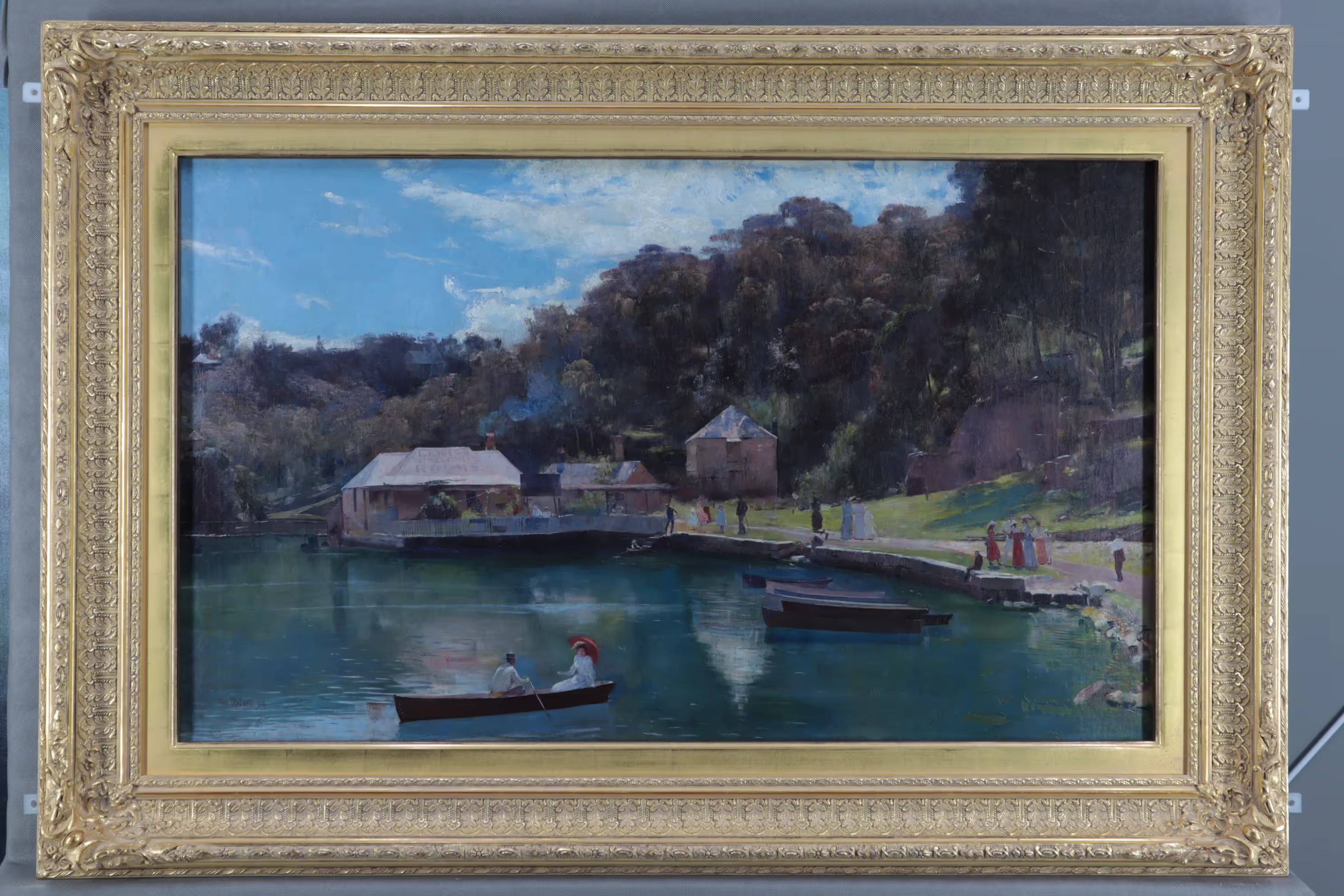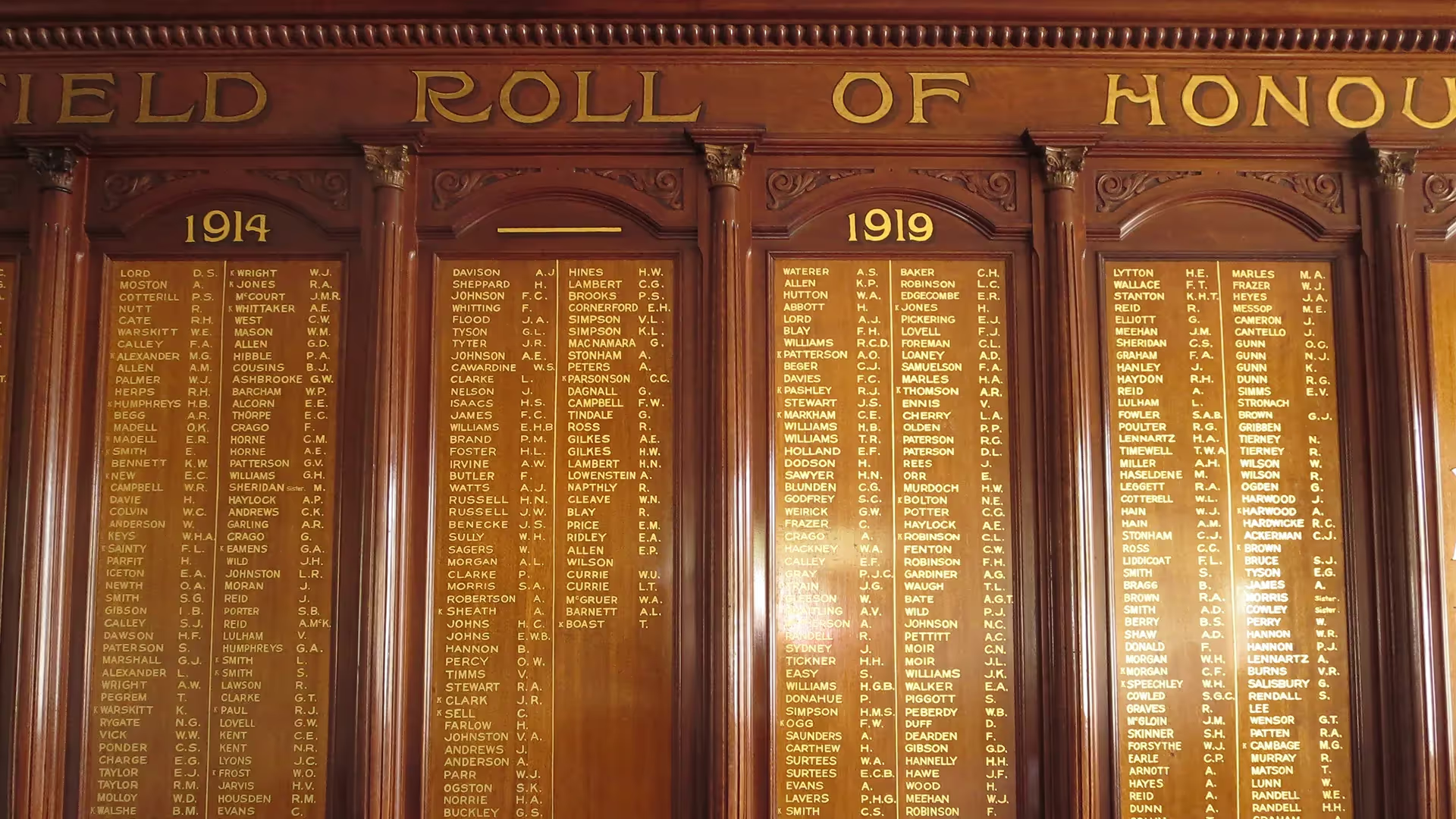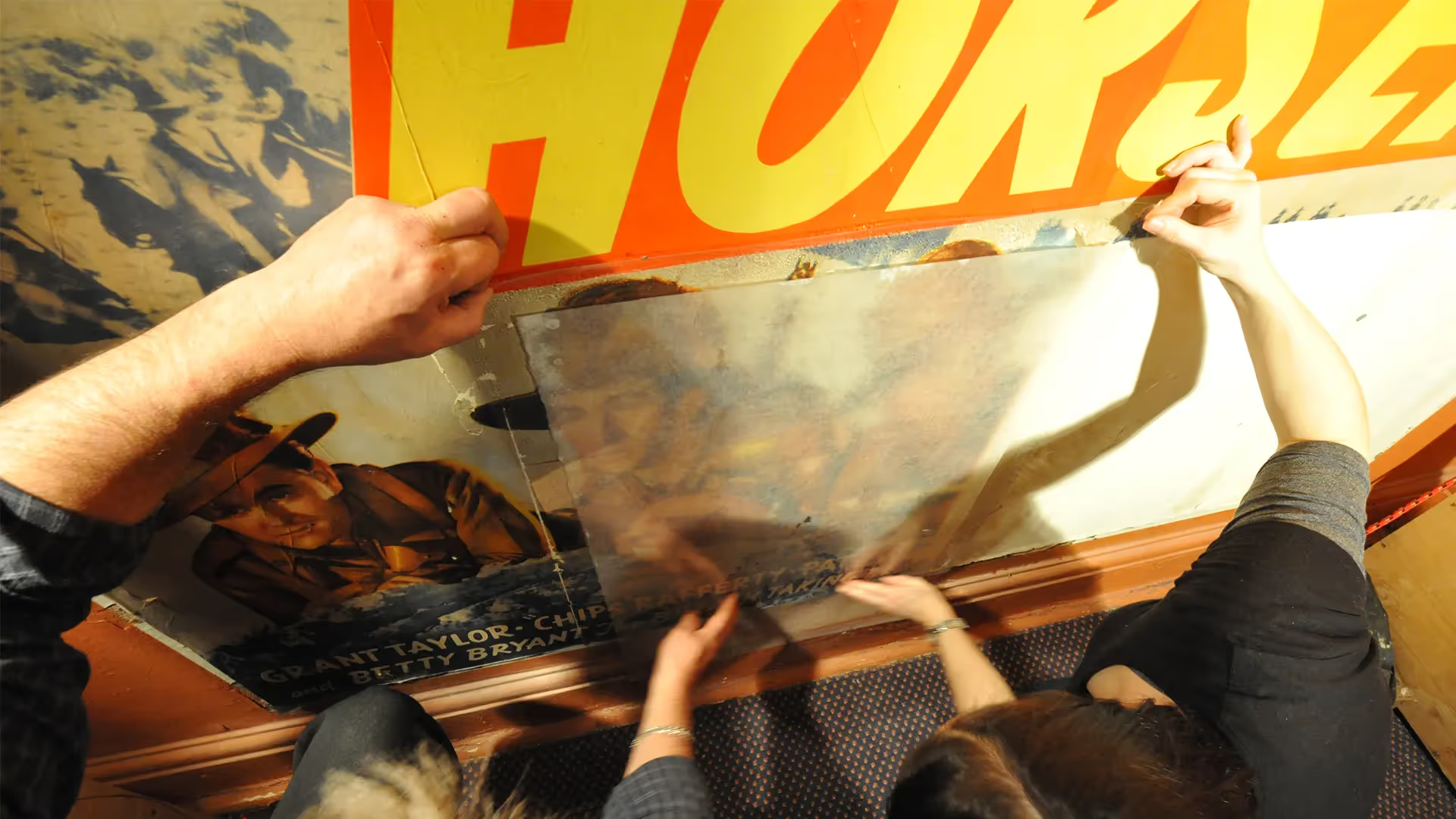Condition
The artwork was in fair condition. There was a layer of surface dirt and several losses were visible. Discolouration was apparent along the grooves of the impasto in the blue-sky area.
There was significant damage and extensive inpainting on one side of the painting where it had previously been folded back by 9cm. Mild blanching of the inpainting had occurred, along with drying cracks and shrinkage of the paint. The paint was friable and raised and, especially along the fold line,the texture was broken, creating irregular light refractions.
Previous retouching had slightly discoloured. Tenting had occurred along the left edge and small losses of paint were visible. Stains from fly spots were visible, particularly on the sky and water surfaces. The canvas tension was slightly loose. Very minor warping was present and the surface sheen of the painting was uneven.
On the reverse, dirt and debris had fallen in between the stretcher bar and canvas causing deformations in the canvas. There was staining on the back of the canvas. Tears and holes caused by nails when the painting was reduced in size had been reinforced by synthetic threads applied to the back.
The more recent reproduction frame was in good condition. There was a scratch to the lower front of the glazing, and a layer of surface dirt.
Treatment
First, the painting was documented, photographed, and removed from its frame. The loose surface dirt on the artwork and frame was cleaned by a three stage process using a brush vacuum and dry sponges.
Dirt that was well-adhered to the front of the artwork was then removed using pH 6 adjusted water. The flaking and unstable paint was consolidated and an isolating varnish was applied. Losses in the paint layer were then filled and textured. The previous inpainting and new losses and fly stains were retouched and the sheen was adjusted locally.
The labels on the back were stabilised and carefully removed from the old acidic backing board. They were then put into a protective mylar slip and transferred to a new conservation grade backing board.
The artwork was reframed in the original frame with a new spacer and backing board.
See more conservation stories from the NERAM 'Adopt an Artwork' program here
Before treatment
After treatment










%20DT%201-Sm.avif)
